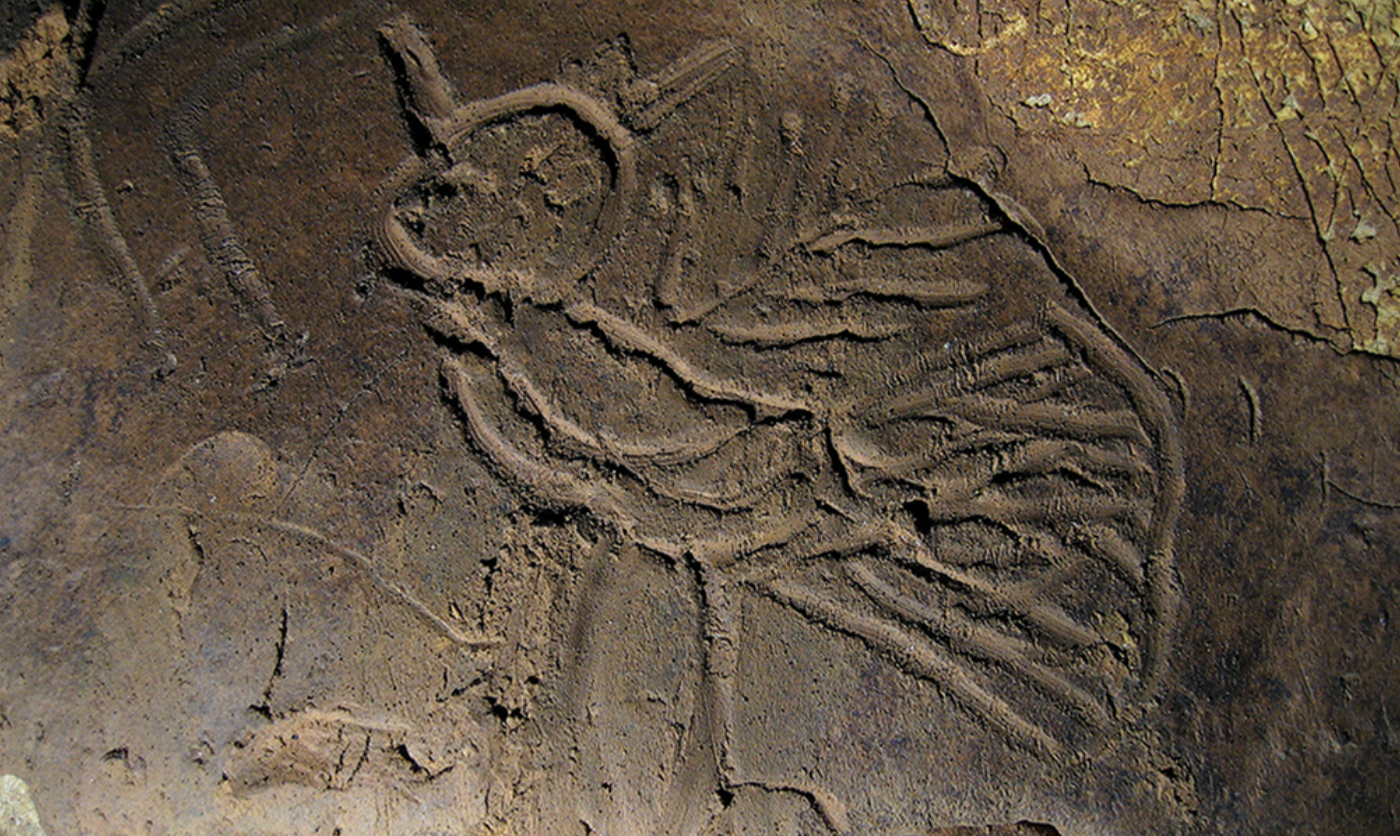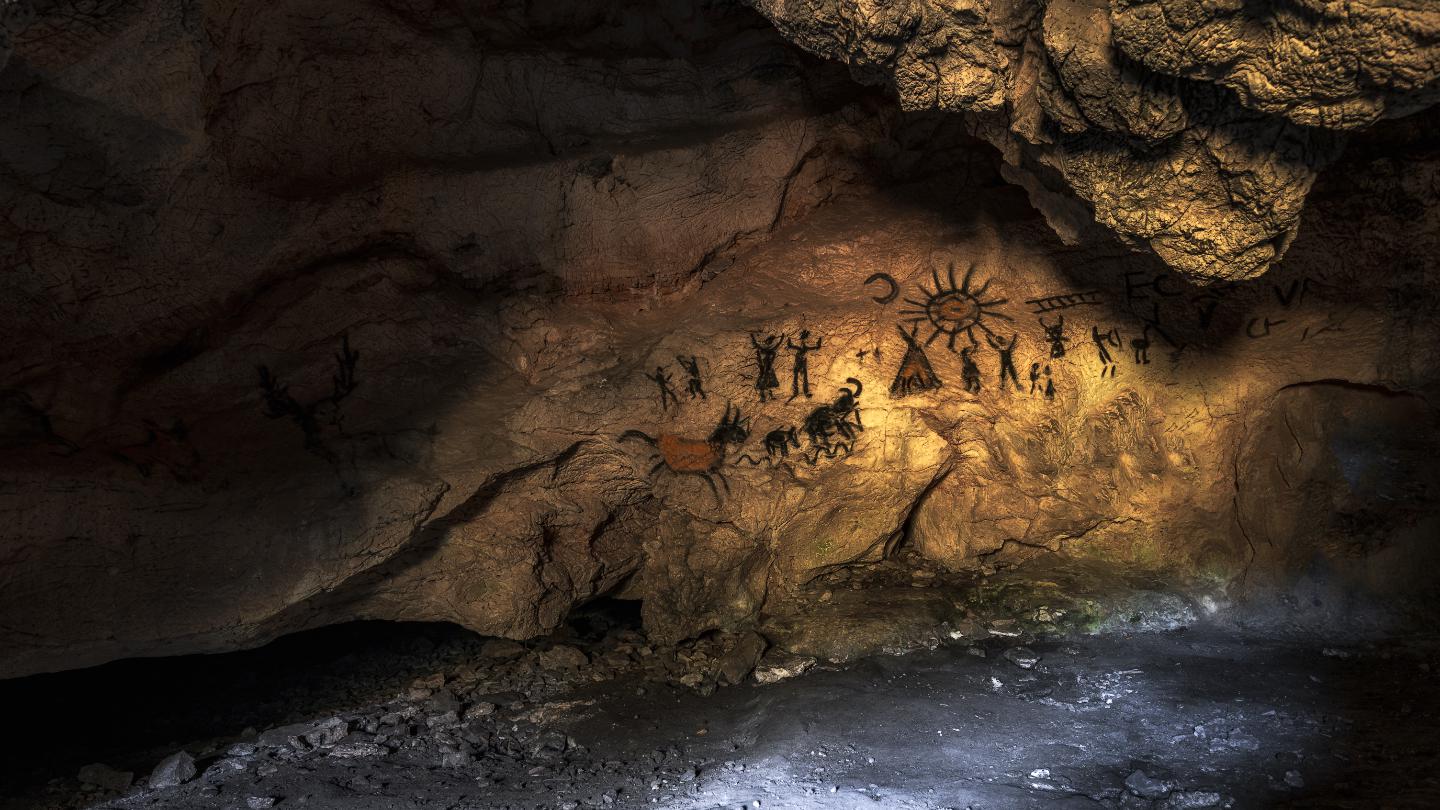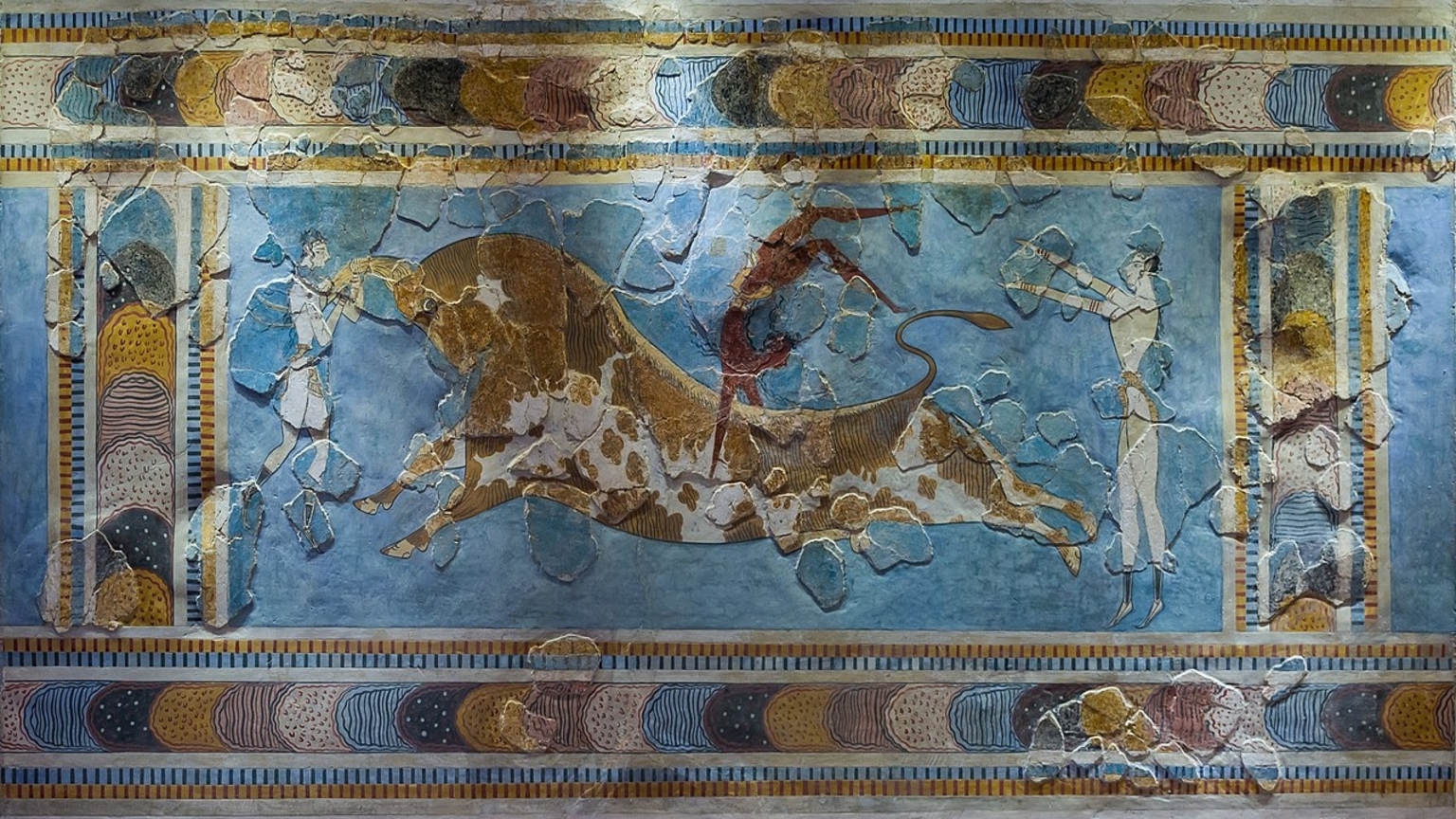Found: Largest known Native American cave art, hidden in plain sight

- The American southeast houses nearly 100 caves decorated by Indigenous people.
- When using 3D visual tools to map one of the most famous caves, archaeologists stumbled upon an extraordinary finding: five huge figures, carved into the ceiling of a cave, so faint as to be invisible to the naked eye.
- The images range from 3 feet to 11 feet long, making them the largest known art figures in North America.
More than 1,000 years ago, Native American artists lay on their backs, deep in a cave in present-day northern Alabama. They started to etch into the mud on the damp, limestone ceiling above them. With only 2 feet of distance separating the cave’s floor from its ceiling, these ancient artists could never step back to appreciate their images in full. However, thanks to 3D imagery, we can.
A team of archaeologists led by the University of Tennessee, Knoxville’s Jan Simek reported the discovery of five large cave images. They published their findings in the journal Antiquity.
Measuring between 3 feet and 11 feet in span, the drawings, which depict human and animal-like figures, are the largest ever discovered in North America. Striking for their size and sophistication, the images are also notable for how they were found. Without high-resolution 3D photogrammetry, a tool that produces realistic digital images that can be manipulated in virtual space, the large figures would still be hiding in plain sight on the ceiling of one of the most surveyed caves in North America.
Photogrammetry shows promise for ushering in a new era of ancient cave art discovery, contributing to our knowledge of indigenous cultures.
Dark zone cave art in North America

Indigenous cave art has long been known from famous caves in Asia and Europe — for example, in the Dordogne region of southwestern France. In 1979, archaeologists made the first discovery of North American dark-zone cave art (art beyond the reach of sunlight). The mud drawings they found in a cave in Tennessee were up to 800 years old. Since this discovery, archaeologists have reportedly identified 89 cave art sites in southeastern North America, with images ranging in age from 600 to 7,000 years. Whereas the southwestern United States is known for its rock art and petroglyphs, North American cave art is unique to the southeastern United States.
The 19th Unnamed Cave, arbitrarily named and numbered to protect its location on private land, is found in Alabama and features more than 3 miles of underground passageways. The cave is located on the tribal homeland of the Eastern Band of Cherokee Indians. The cave houses one of the richest cave art collections in southeastern North America, with hundreds of images of abstract shapes, serpents, insects, birds, and anthropomorphic figures. These glyphs are found in an open chamber measuring about 16-by-65 feet. They were etched, probably, by drawing into fresh mud on the room’s damp ceiling. Here’s the catch: The ceiling is low. To view an image on it — or to make one — you need to lie down on your back.
The figures are not dated, but charcoal fragments and wood streaks on the walls — probably from torches — come from the Middle and Late Woodland periods (between 200 BCE and 500 CE), well before European contact. During this time, sedentary, agricultural means of living were replacing nomadic lifestyles.
New revelations of ancient art
3D photogrammetry is a technique used to create photorealistic 3D models from 2D images. To create a 3D model, the artist needs to take many photos of a target object, with each photo overlapping its neighbor by 60 percent to 80 percent. Software then compares the images and renders a 3D model that the user can calibrate by measuring known distances between points on the object.
Photographer Stephen Alvarez is a founder of the nonprofit Ancient Art Archive, which preserves and shares ancient art using virtual reality. Alvarez wanted to use 3D photogrammetry to model the 19th Unnamed Cave. In 2017, Alvarez and archaeologists spent two months taking 16,000 photos of the cave. Alvarez lighted the glyphs obliquely to reveal the very faint engravings. They plugged the images into 3D modeling software to create an animated model and a tour of the glyph chamber that anyone can view online.
In the process of creating the model, the researchers found something new: faint engravings that clearly showed up in the model but were difficult to see in person. The etchings did not coalesce to form an image when viewed from the limited perspective of the cave’s floor. But the software can virtually lower the cave space, allowing researchers to view the ceiling from different positions. The faint engravings formed entire compositions. As Alvarez explained to Science, “we could light the space any way we wanted and drop the floor away to virtually step back and see the entire ceiling.”
What they found was remarkable: five enormous figures that had been hidden in plain sight, completely undetectable by in-person observation.
Five stunning images
Three of the previously unseen images were human-like beings dressed in regal garments, drawn from cross-stitched patterns. One figure seems to be wearing a sash, while another holds out a hand. Among these anthropomorphic etchings were two enigmatic glyphs. One depicts a complex figure with twisting and curving lines. The researchers think it may represent a serpent. The other figure has a rounded top that tapers into a torso with a tail. It has six parallel lines at its head and diamond patterns that resemble the body of the Eastern diamondback rattlesnake, an animal endemic to the American southeast and sacred to indigenous people. In this image, the glyph adjoins a natural fissure in the ceiling, suggesting that this serpent is emerging from the rock.
Measuring about 11 feet from head to tail, this figure is the largest in the cave. In fact, it is the largest cave art ever discovered in North America. Though some rock art figures approach its size, such as the Barrier Canyon Style images of Utah or the ancient murals in Baja California, researchers had not suspected that such large images existed underground in the American southeast.
Regalia, rattlesnakes, and symbolic emergence from stone are themes shared with other ancient art in the region. However, the mysterious figures are not recognizable from recorded stories. They probably depict characters from unknown religious narratives in the Middle Woodland, adding to our understanding of Native American history and culture.
Master artists
The images display an elevated level of artistic proficiency. The artists had to lie down and etch into the mud, all while being unable to see their figure in its entirety. According to the authors, these artists worked entirely from imagination. They had no recourse to visual perspective.
So who were these maestros? And why did they draw these images in this cave?
We do have some clues as to why cave art exists. Native Americans modified their landscapes to connect to the supernatural realm. For example, they built mounds to ascend to the spirits of the upper world. Decorated caves could be their way to descend and connect with the other half of the supernatural world. With this context, the researchers speculate that the figures probably represent spirits of the underworld. The images’ shape, size, and context shows the power and importance of their subjects. In fact, these images probably reflect ideas shared across the continent about who inhabited the supernatural world.
A promise of new cave art discoveries
3D photogrammetry has given us a new path toward better understanding indigenous cultures and heritage. Prior to this study, archaeologists already used 3D photogrammetry to provide virtual reality experiences for sites around the world. This has been a valuable tool to educate the public about early cultures.
Landscape-level remote sensing, using tools such as light detection and ranging as well as geographic information system mapping, revolutionized how we identify archeological sites. Now, 3D photogrammetry promises to enable future discoveries that will broaden our understanding of Native American cave art and culture.





